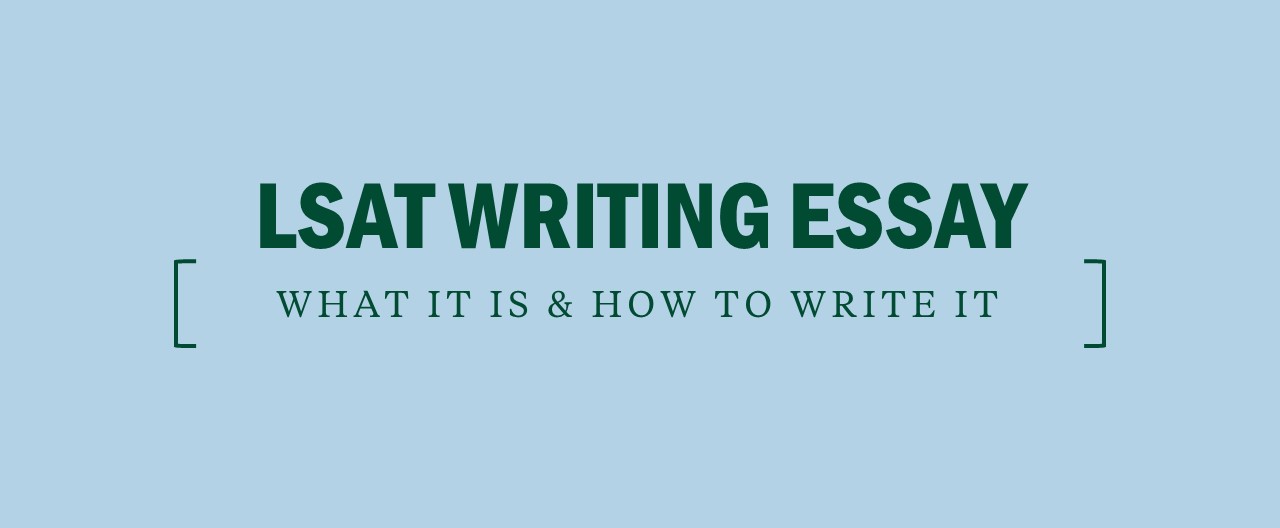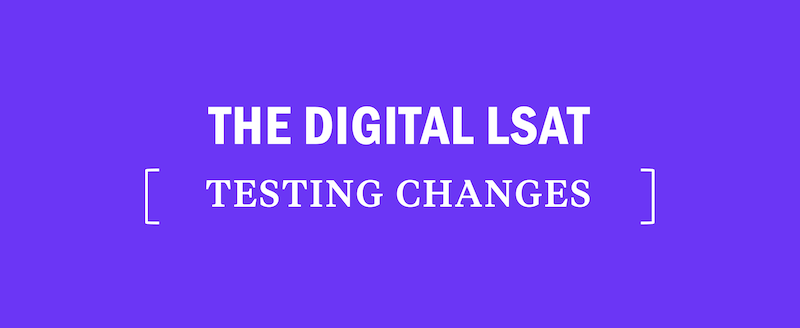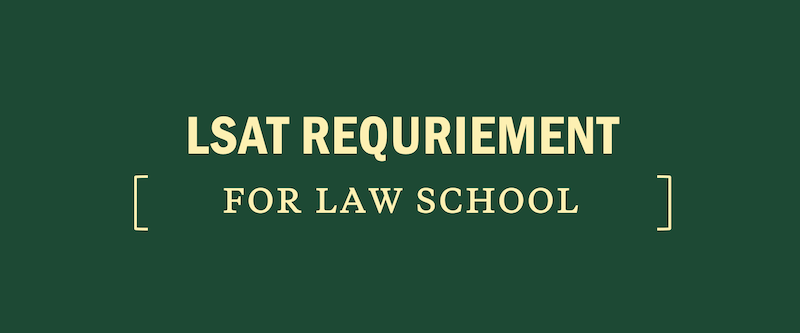The LSAT Writing Essay: What It Is and How to Write It
Even if you’re well into your LSAT prep, you may still have questions about the additional essay assignment called LSAT Writing. In this short piece, we’ll cover what it is, why law schools want it, and how to create a winning LSAT Writing essay.
TABLE OF CONTENTS
- What is LSAT Writing?
- What does the LSAT Writing test?
- How is the LSAT Writing Essay scored?
- What will the essay topic be about?
- Sample LSAT Writing prompt
- How to write your LSAT Writing Essay
What is LSAT Writing?
LSAT Writing is a 35-minute essay written in response to a fictional fact pattern. You’ll choose between two options laid out with criteria for your fictional decision maker and support your decision using “facts” supplied in the essay prompt. The fact pattern is fictional so that it neither requires nor rewards any outside knowledge.
There is no additional fee for LSAT Writing, and just as you will for the regular, scored LSAT administration, you’ll complete the essay through proctoring software you’ll install on your computer.
You can take the LSAT Writing test up to a year after your LSAT test date, but you’ll want to make sure you complete it in time to submit your law school applications. Your application is not considered complete until you submit your LSAT Writing essay, so schools will not receive your admissions packet until it is finished. You only need to complete one LSAT Writing essay even if you decide to take the LSAT more than once.
What Does LSAT Writing Test?
The LSAT Writing essay is designed to test how well you:
- Organize a compelling argument using sound reasoning and supporting evidence, and
- Express your thoughts clearly in written form.
The LSAT essay section is NOT meant to test how many big vocabulary words you know, how much you know about the law, or any other specific topic, or even how creative you are. Don’t fall into the trap of thinking that your task is to blow away the reader with impressive and complex thought processes, words, or sentence structures.
Rather, you want to show that you can ably develop a simple argument and support it in a clear and compelling way. That’s it.
How is the LSAT Writing Essay Scored?
LSAT Writing is not scored. Your writing sample is sent along with your application to the law schools you’ve chosen, but no score or evaluation is attached.
The essay is a supplemental tool that law schools use to evaluate your candidacy if they so choose. A few schools may never look at it, but most do. Some read it to get a sense of your extemporaneous writing, a skill central to your success on law school exams (and something law schools cannot assess from your application).
Others compare the LSAT Writing essay to a candidate’s personal statement if they have suspicions that the applicant may not have written the personal statement by themselves. One thing admissions officers tend to agree on is that seeing evidence that an applicant did not even take the LSAT Writing task seriously can be an application killer. Snide or dismissive responses to the prompt may reveal an immaturity that schools don’t want to deal with in their incoming class.
How precisely the LSAT Writing essay is used depends on the school. The fact that the essay is unscored should take some of the pressure off, but don’t ignore this part of your application. You never know how a school will use your essay, so it’s in your best interest to do the best job you can.
[ RELATED: What’s a good LSAT Score? ]
What Will the Topic Be?
While you won’t be able to predict the topic of your LSAT Writing prompt, you can precisely anticipate the format. You are always introduced to a decision maker, the two things that person is choosing between, and the criteria on which they’ll base the decision. Your job is to choose one of the options and support your decision with facts presented in the fact pattern that follows. There is no correct answer (or even objectively better choice), but your task is to support one option and reject the other.
Sample LSAT Writing Essay Prompt
Here’s a watered-down example (keep in mind that the scenario on your exam will be more involved):
John wants to buy a pet. He is choosing between a cat and a dog. He only has time to care for one pet. Write an essay in which you argue for the purchase of one type of pet over the other based on the following considerations:
- John wants a pet that will be relatively maintenance-free.
- John wants a pet that will be a true, loyal companion.
The first option, the cat, is a clean pet that does not typically damage or destroy household property. While the cat does need to be fed twice per day, it does not need to be taken for daily walks. The cat is very aloof and non-responsive to human interaction, but it does grow attached to its human owner over time.
The second option, the dog, requires daily attention. The dog has been known to damage household property, and it requires walks on a daily basis. With training, the dog can learn to be relatively self-sufficient. The dog responds to human interaction and craves the attention of its human owner, but it can’t communicate very well with humans.
No matter the subject matter of your LSAT Writing task, the scenario will be presented in the same way. The first part presents a choice, the second part (the bullet statements) presents two considerations, and the third part provides more information. It is not important which option you support; law schools want to see how well you justify your choice, and how clearly you lay out your arguments.
How Should I Write My LSAT Writing Essay?
Follow these steps for planning and writing your LSAT essay. This isn’t the only way to do it, but it is a consistent, repeatable approach you can rely on.
Step 1: Compile information in grid form (5 minutes total for steps 1-3)
On a piece of scratch paper, set up a table with the choices along the top and the decision criteria along the side. In the intersecting cells of the grid, including the appropriate pros and cons use a “+” before any pro and a “-” before any con.
For our example, it might look like this:
| Outcome | cat | dog |
|---|---|---|
| Relatively maintenance-free | + clean + doesn’t destroy property + no walks – needs food twice per day | – daily attention – damages property – daily walks + can learn to be relatively self-sufficient |
| True, loyal companion | – aloof and non-responsive + becomes attached to the human owner | + responds to humans + craves human attention – can’t communicate well |
You’re familiar with cats and dogs, so it’s probably obvious that a cat would be a good low-maintenance choice and a dog would be good for companionship.
Keep in mind, however, that the scenario you will see on your exam will be less familiar. Organizing the information in a grid makes it much easier to guage each choice’s relative strengths and weaknesses.
Step 2: Decide on a “more important” consideration (5 minutes total for steps 1-3)
At this point, make a decision. Is it more important for John that the pet be maintenance-free or that it be a loyal companion? While there’s no right answer, it’s your task to decide. Choose one that you can easily justify (even if it’s a made-up justification). For example:
“Having a loyal companion is more important than having a low-maintenance pet because true friendship trumps all else. If John has a true companion and friend, the daily maintenance will become a labor of love instead of a hassle.”
Step 3: Make your choice (5 minutes total for steps 1-3)
Your decision in step 2 should lead to a clear choice between the options. In this case, if you deem companionship the more important consideration, then choose the dog (since the dog clearly has more compelling pluses in that part of the grid). State your answer to the prompt in a single, declarative sentence:
“John should pick the dog because it will serve as a more loyal companion than the cat will.”
Step 4: Write the essay (25 minutes)
Plan on structuring your LSAT essay the same way every time. Here’s an easy-to-follow template:
Paragraph 1:
A. Summarize the decision.
“The scenario presented above puts John in a position in which he will choose between purchasing a cat and purchasing a dog.”
B. Acknowledge the complexity of the decision.
“Given the considerations and characteristics of the choices at hand, this is a very difficult decision in that each choice has its merits.”
C. State your opinion.
“Even so, John would be better served by choosing the dog.”
Paragraph 2:
A. State why the primary consideration (the one you chose to be the primary consideration) is more important and how your choice satisfies this consideration.
“First, it is more important to have a pet that serves as a loyal companion than it is to have a pet that is maintenance-free…” (justify this statement, even if it’s a made-up justification)
“The dog will be a loyal companion in that it will …” (use the information from the grid to show how)
B. State why the other choice (cat) falls short in this regard.
“The cat, on the other hand, is a poor match for anyone looking for a loyal pet …” (use the information from the grid to show how)
Paragraph 3:
State how your choice still does an okay job with the secondary consideration “Furthermore, while the dog isn’t an ideal choice for someone wanting a maintenance-free pet, it can learn to be relatively self-sufficient…” (and use any other information from the grid to support this).
Paragraph 4:
Summarize your argument.
Step 5: Proofread (5 minutes)
Spelling errors, misprints, grammatical errors, etc. will never go over well. While a few simple mistakes won’t kill you, you want to be sure your final essay is as clean as possible.
Practice this a few times on some real essay prompts and you should be all set.






